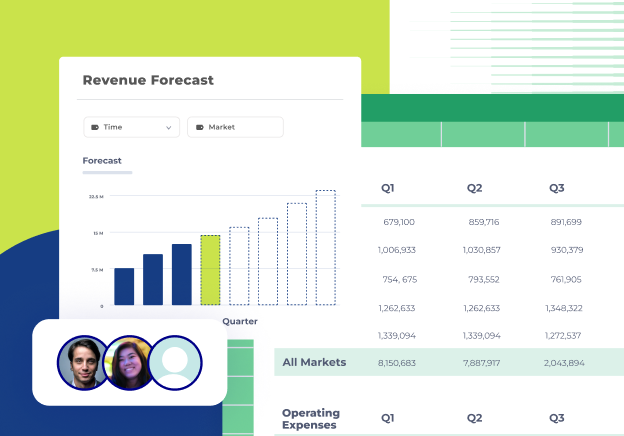1. Identify a considerable pain
Any investment in finance transformation must solve a problem that’s worth solving. Positioning your transformation as transformational is the first step in getting leaders to notice.
Once you’re in the door, sell the plan like the big deal that it is. Show real areas of pain and the real solutions that will solve them.
And make it more than just your team or finance; make sure it supports company-level goals and objectives.
2. Quantify the pain
The numbers behind the problem aren’t just expected, they are what leaders use to make important business decisions. So start by quantifying the pain in terms decision-makers will understand and agree with.
Quantify inefficiencies in hours or days wasted. Frame errors or friction points in terms of money and opportunities lost. It not only puts the problem in a common language but also shows that you’ve done your homework and understand the scope of both the pain and the eventual benefits.
Once the numbers get big enough, it’ll be hard for any business leader to ignore the impact of solving the problem.
Sometimes the benefits are difficult to quantify, especially if they relate to compliance, risk reduction, and strategic benefits. Make sure to address these points in a broad calculated estimate or on additional talking points.
3. Quantify the benefits
Transforming finance to become more efficient and accurate is the goal, but your effort will be measured in time and dollars, so be sure your benefits are as well.
Once you’ve done the homework to quantify the pain, it’ll be easier to quantify the efficiency, productivity, and speed gains in the same terms.
So if financial reporting consumes 50 hours of aggregate manual effort per month, show that automation and integration will save the company 600 hours and $60,000 annually.
The numbers will quickly add up, making it easier for executives to see that this is a significant pain and that the benefits are worth the investment.
4. Show the ROI
If you’ve followed the previous tips, the ROI of your transformation should now sum up to a no-brainer for leadership.
The purpose of an ROI analysis is to show that the dollar value of the benefits is greater than the dollar value of the cost of the project, expressed as a percentage.
ROI % = (Net Benefits from Project / Total Cost of Project) x 100
As a general rule, an ROI of 20% or higher is considered a good use of capital.
But remember, cash is a finite resource and your leadership team can’t invest in every project simultaneously.
The higher that percentage, the more compelling the business case and the more likely you’ll get a yes from management.

5. Be the best alternative
Your company is only going to take on so many budget-and bandwidth-consuming initiatives at a time. Prove why your finance transformation project is the best choice, and make sure the need is crystal clear and the impact is overwhelming.
A higher ROI prioritizes finance transformation, especially when it’s well aligned with company goals. When done right, the decision-makers should say, “There’s no way we can afford NOT to do this project.”
6. Sell it
Treat this entire project as a sales pitch and use sales techniques to get the win. Leverage the psychological principles of persuasion, like scarcity, reciprocity, and social proof.
Put a time limit on the need (“it’ll only get worse”) or the imperative (“every day we don’t solve this problem costs us $1,000”).
Include benefits for the decision-makers, and make sure they get some credit.
And do your research to show how competitors and market leaders have already done this same finance transformation with this same software solution and realized great success.
Conclusion: get a “Yes” on finance transformation
Like anything, getting a yes for your financial transformation comes down to the story you tell. Finance relies on storytelling to sell a vision and get buy-in from the business, so leverage those skills.
But couple them with good, old-fashioned sales tactics that leave your decision-makers with no other option but to approve this project.
Hopefully, these best practices will put you on the right path to getting a big fat yes from your boss.
Good luck!




.png)









.png)




.png)
.webp)
.png)